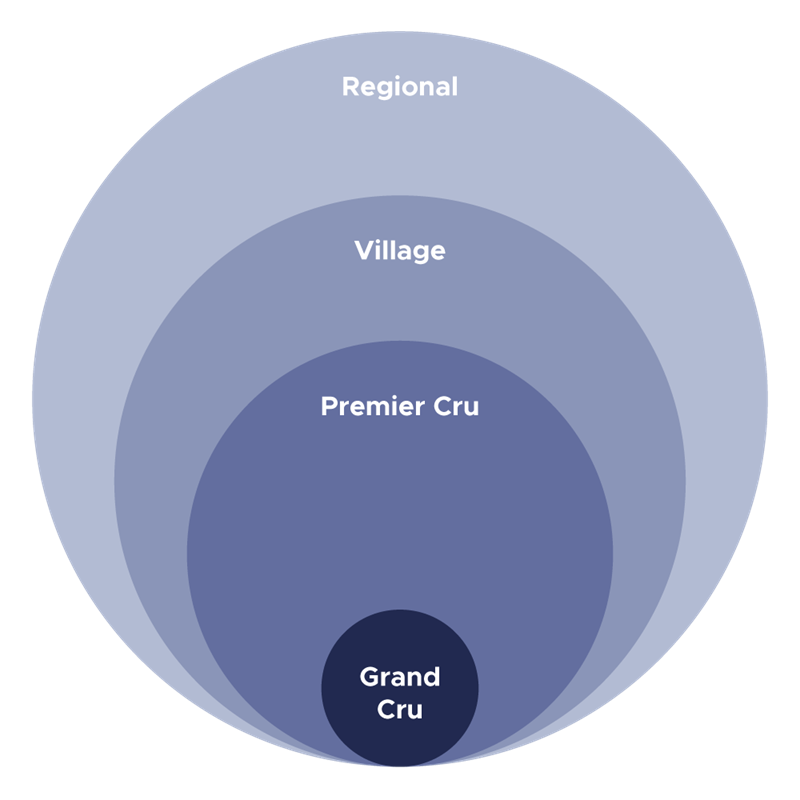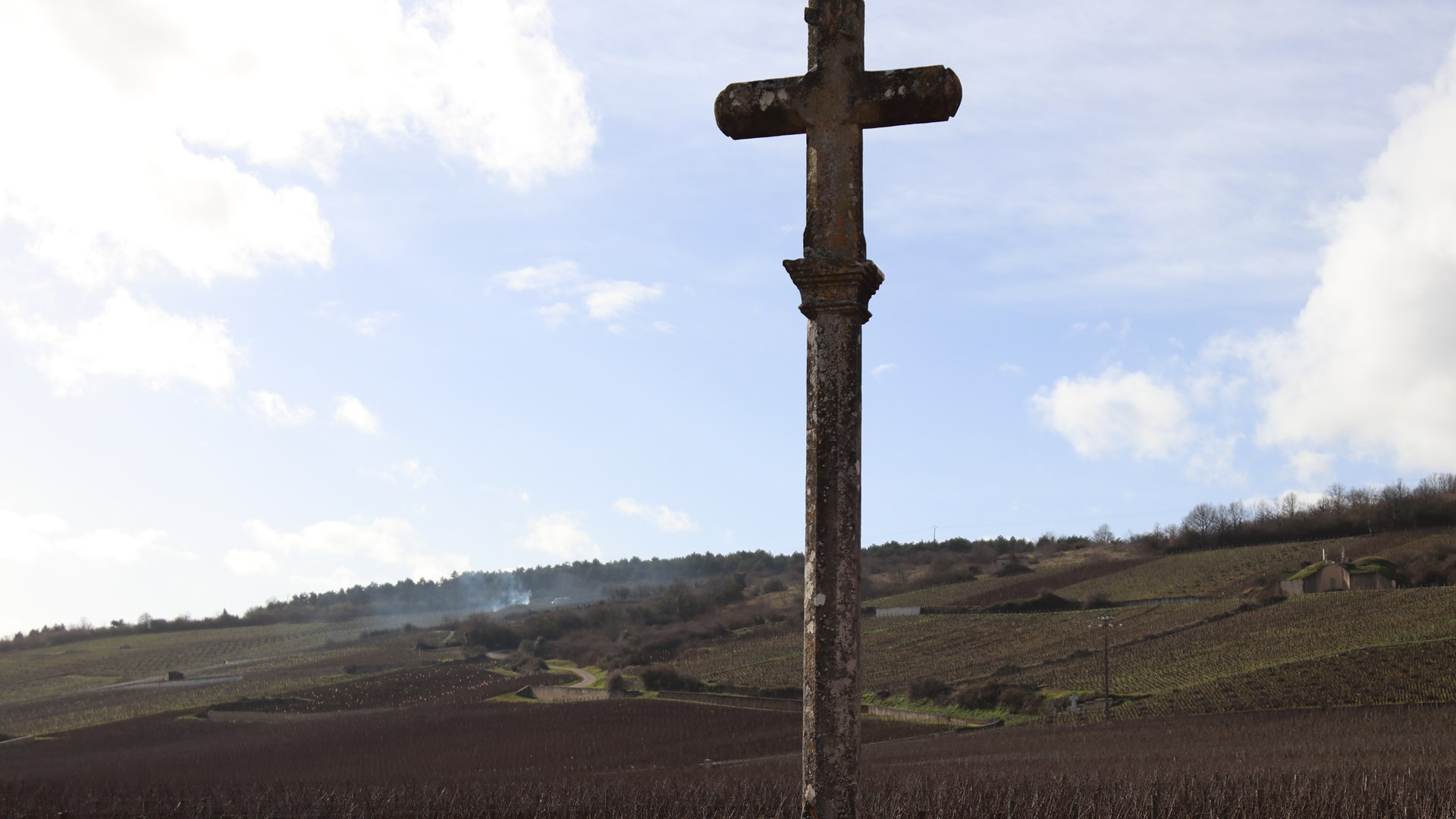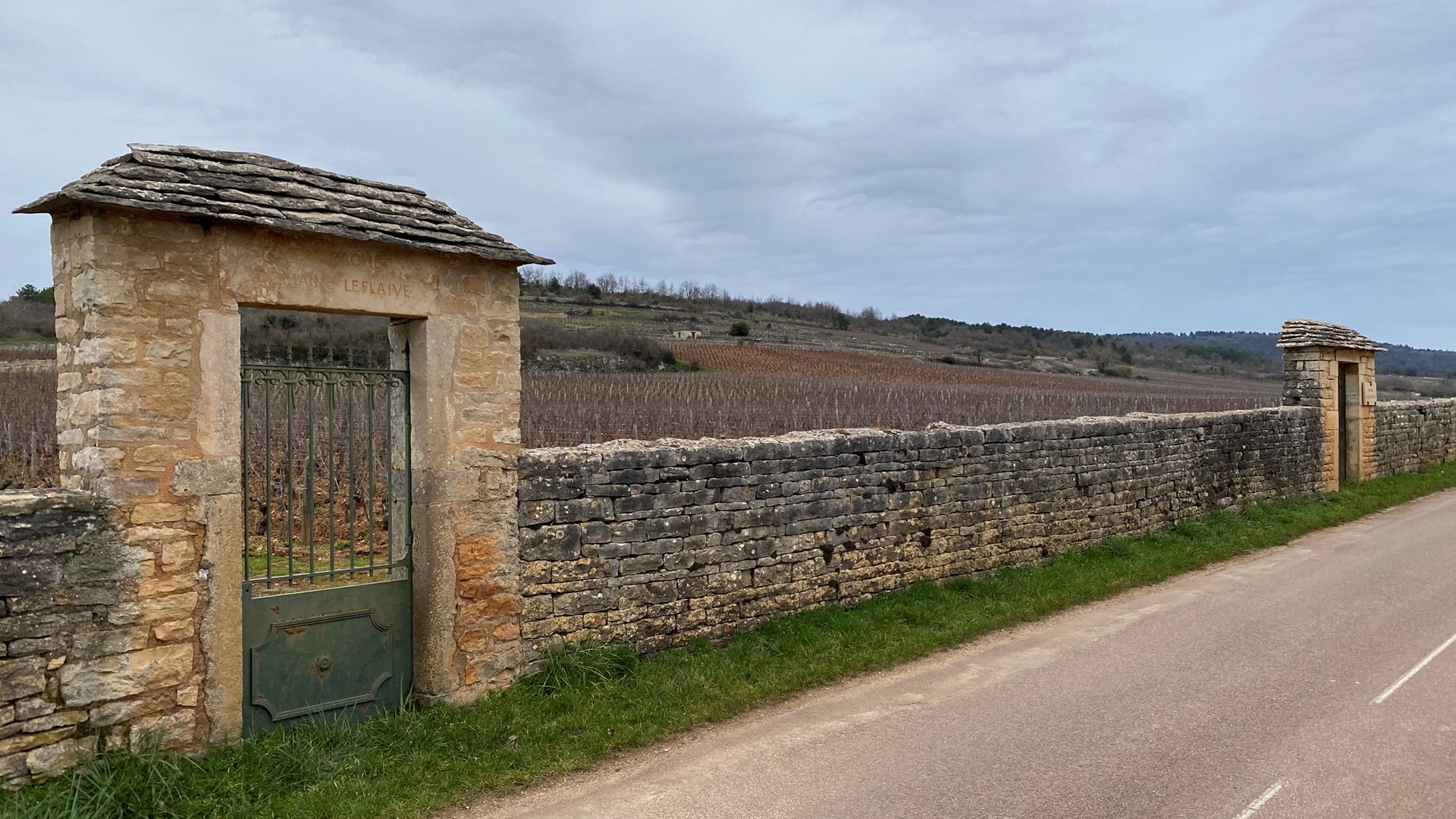Article - RareWine Academy
Burgundy Wine Guide - For Beginners
Burgundy produces some of the best and most demanded wines in the world, but production is limited. Learn more about Chambertin, Montrachet, and the rest of magical Burgundy.
Burgundy is in many ways an easy region to understand, but it can easily get complicated. This guide focuses on the basic principles of Burgundy to give you a better start on this fine region.
Geographically, the Burgundy district is located in the centre of France and is known and recognised worldwide for some of the most magical vineyards in history. If you look at the grape varieties, there are basically only two grapes you need to know to talk about Burgundy, Pinot Noir and Chardonnay.
Burgundy accounts for only 4% of the total vineyards in France, but it is perhaps the most optimal for making amazing wine. There are just over 30,000 hectares planted with vines divided into 50% Chardonnay and 40% Pinot Noir. The last 10% are also divided between Aligoté, Gamay and other lesser grape varieties.
Burgundy extends from Chablis in the north to Macon in the south, a distance of 230 km. However, wine is not grown along the entire area. The most famous area for wine production is the Côte d'Or (the golden slope), which stretches for just over 65 km. This is not much wider than 2 km. at its widest point.
Appellations In Burgundy
In France, wine regions are divided into appellations. An appellation is a protected area of origin where a number of rules apply to the production of the specific product. There are appellations for everything from Cognac to Champagne, but appellations also play a major role in Burgundy. An appellation can be valid for a region as a whole, but also down to a single vineyard. In Burgundy there are 84 appellations in total, 33 of which are Grand Cru appellations. Nevertheless, Grand Cru production represents less than 2% of total production. These are definitely some of the most demanded wines in the world, both today and in the future.
The appellations in Burgundy are divided into four main categories. The larger the area of each appellation, the fewer rules apply. The Grand Cru vineyards in particular, are subject to even more strict rules for wine producers. The hierarchy is structured as follows.
- At the bottom of the hierarchy are the regional appellations covering large areas. Burgundy AOC and Hautes Côtes de Beaune are two of them. This part accounts for more than 50% of the total production in Burgundy.
- Next you come to the village level - or to the municipal appellations. Here, the individual villages are covered. Gevrey-Chambertin is one example. These can also be added to the name of a Lieux-dits from which the wine comes.
- Next step up is Premier Cru or 1er Cru. These are vineyards with a better location where the vineyard is classified as Premier Cru. These can either be mixed or bottled from one vineyard, in which case the name of the vineyard will be indicated on the label. For example. Gevrey-Chambertin, 1er cru Clos Saint Jacques
- On the top you will find Grand Cru, which with each designation is definitely the best vineyard. Here, the name of the vineyard simply appears on the label. It is less than 2% of production that is Grand Cru.
 The appellations in Burgundy
The appellations in Burgundy
Burgundy is divided into five sub-regions: Chablis, Mâconnais, Côte Chalonnaise, Côte de Nuits and Côte de Beaune Each of the five sub-regions has its own characteristics. Côte de Nuits and Côte de Beaune are the two sub-regions of the Côte d'Or.
Chablis
Chablis is the most northerly of these regions, at a good distance from the other regions. Chablis is geographically closer to Champagne than to the rest of Burgundy. The cooler climate also means that the wines are generally tighter and have a higher acidity than in the rest of Burgundy. Chablis is always white wine and is made from the Chardonnay grape. The best wines can of course be found in the Grand Cru vineyards, and if you only need to highlight one, Les Clos from Domaine Raveneau is obviously worth mentioning. Chablis and its surroundings account for 20% of the production in Burgundy.
Mâconnais
The southern outer pole is Mâconnais, which is usually a little warmer than the northern regions. Mâconnais is dominated by 80% Chardonnay. At its southernmost end is the famous cliff Solutré. Immediately below it are the best vineyards in Pouilly-Fuissé and the neighbouring villages. Here are some premier cru vineyards, but no grand cru. In general, the wines are very lovely with great richness and intensity of taste. In the northern part of the region is the village of Chardonnay, which probably gave its name to this famous grape variety. Mâconnais accounts for 7% of the total wine production in Burgundy.
Côte Chalonnaise
North of Mâconnais lies the Côte Chalonnaise. This is possibly the birthplace of the Cremant de Bourgogne in 1822, again dominated by Pinot Noir and Chardonnay. Givry, Mercurey and Rully are three of the most famous municipalities in the region. In the Chalonnaise, the soil is almost identical to the Côte de Beaune, which lies to the north. The best wines therefore have good conditions to reach a high level. Here, more precisely in Bouzeron, we also find the only pure village-appellation for the Aligoté grape. The Côte Chalonnaise covers only 6% of the Burgundy production.
Côte de Nuits
In the centre of Burgundy is the "golden slope" or the Côte d'Or, which consists of the Côte de Nuits in the north and the Côte de Beaune in the south. The Côte de Nuits is the home of the great red wines of Burgundy. This is in many ways the epicentre of Pinot Noir and the most legendary Grand Cru vineyards in Burgundy. A large number of the world's most famous and magical vineyards, villages and producers are located side by side on the Côte de Nuits.
One of them is the Chambertin vineyard in the commune of Gevrey-Chambertin. This is the home of prestigious producers such as Armand Rousseau and Dugat-Py.
In the municipality of Morey-Saint-Denis, with Clos Saint Denis as the best vineyard, you will find magical wines from producers such as Domaine Ponsot and Domaine de Lambrays.
The municipality of Chambolle-Musigny with the legendary Grand Cru vineyard Musigny, is dominated by producers like Vögué and Roumier.
In Vougeot you will find, among other things, Burgundy's geographically largest Grand Cru vineyard, Clos de Vougeot, with a row of jewels from major producers.
Vosne-Romanée is the epicentre of perhaps the most iconic and best wines in the world. Here you will find one legendary Grand Cru vineyard after another. Vosne-Romanée is synonymous with the Holy Grail in the world of wine. It is the home of perhaps the greatest icon of all; Domaine de la Romanée-Conti and the most famous vineyard of all, the monopoly vineyard Romanée-Conti, where - in the eyes of many - the best wine in the world is produced.
Finally, there is the slightly larger municipality of Nuits-Saint-Georges, which counts a number of prominent Premier Cru vineyards. The Côte de Nuits only accounts for 5% of total production in Burgundy.
 The world-famous Romanée-Conti vineyard and its famous iconic cross
The world-famous Romanée-Conti vineyard and its famous iconic cross
Côte de Beaune
In the southern half of the Côte d'Or is the Côte de Beaune. Farthest north, the last Grand Cru for red wine can be found in the municipality of Aloxe Corton - famous for Corton and Corton-Charlemagne, where white wine is also produced.
From here we can reach the municipalities around the capital in the Beaune region. The soil is somewhat flattened, and the best slopes and expositions are missing. However, in the Beaune area, lovely wines are still produced, but in a slightly more angular style.
South of Volnay you will find the three large municipalities from which the best white wine in the world is produced. Meursault with wonderful fat and creamy wines and the vineyards of Genevrieres and Les Perrieres. Dom Lafon and Coche-Dury are two of the dominant names in this Village.
Puligny-Montrachet and Chassagne-Montrachet are the two large municipalities that share the world's best white wine vineyard, Montrachet. Montrachet is as good as it gets for white wine. Montrachet is surrounded by a small handful of Grand Cru vineyards that also bear the name Montrachet – Batard- and Chevalier-Montrachet, for example. Leflaive and Leroy are the two most famous producers in the region and will always be synonymous with magical wines from these communities. Overall, the Côte de Beaune accounts for 11% of Burgundy's production.
 Domaine Leflaive and the domain's parcels on Montrachet
Domaine Leflaive and the domain's parcels on Montrachet
The Producers
There are different types of producers in Burgundy. A domain in Burgundy averages 6.51 hectares, which makes many smaller than 2 hectares. When reduced to this size, it is difficult to produce wines that are economically sustainable. As a result, over the years there have been many negotiants who have bought grapes or juice from the smallest producers.
- Today there are 16 wine cooperatives in the region. They mainly produce Cremant and wines from the larger regional appellations.
- Today there are more than 250 negotiants. They buy everything from finished wine to the legal rights to harvest and produce wine from private vineyards. The quality of the negotiants is increasing rapidly in these years.
- There are now more than 3600 domains, and because of French inheritance law there is an increasing number. These are known to produce the best quality because they always have full control from the vineyard to the bottle. However, less than 1/3 of them sell more than 10,000 bottles. So, there are enough grape suppliers for the good negotiants.
The French law of inheritance means among other things that all estates are divided equally. With a few generations, a vineyard is quickly divided into many owners. An owner can then sell his parcel to a company, which can then buy other parcels on the same vineyard. This results in very fragmented vineyards throughout Burgundy. The most extreme example is the Grand Cru vineyard Clos de Vougeot, which now has around 80 owners, each of whom can in principle produce their own wine from the vineyard.
In recent years, we have seen that negotiants have gone further down the production chain, not only to buy finished wine, but also to look after the land where they want to buy grapes. By contributing to the management of the land, they can ensure even higher quality. In this way, we can see a certain shift between the most quality-conscious negotiants and the small domains. Both can now deliver at the highest quality level. There are also producers who act both as negotiants and as domains. They may own some vineyards, and other wines may be made from purchased grapes or must. The labels of these products indicate if the wine is a “domain wine “or is bought.
The Future
Burgundy is an area undergoing great transformation. Prices are rising in the best vineyards, which helps to make the most demanded wines even more expensive. The best Grand Cru vineyards cannot and must not be extended, and if demand is constantly increasing as more people live on the earth and the standard of living is rising, there is only one way to satisfy the rising demand and that is to let the price rise.
Most winegrowers in Burgundy today work according to sustainable principles. Some are certified organic or biodynamic. Many others simply work according to old principles before chemicals were introduced into the vineyards. In general, we see a trend towards even more sustainability in Burgundy, which is only positive. In total, more than 180 million bottles are sold annually in Burgundy, half of which are exported.
